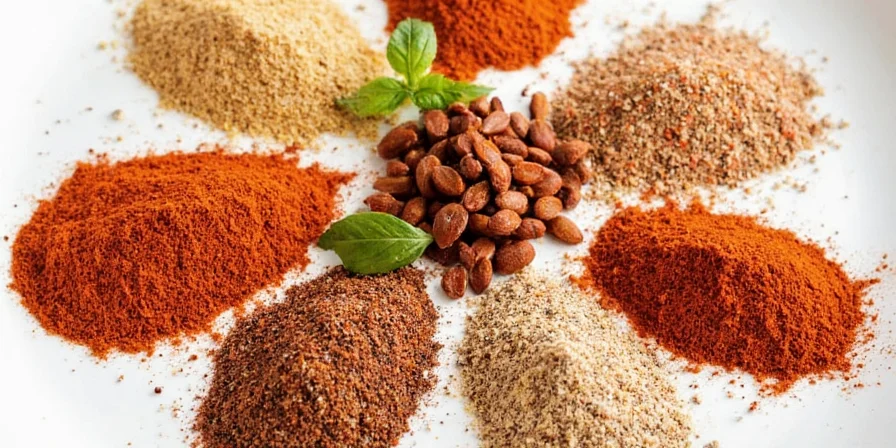Looking for the perfect poultry seasoning measurements, substitutions, or usage tips? You've found the most practical guide for home cooks. Get clear answers on ingredients, measurements, and exactly how to use poultry seasoning for Thanksgiving turkey, chicken recipes, and more—no confusing science jargon required.
What Is Poultry Seasoning and How Much Should You Use?
Poultry seasoning is a simple herb blend perfect for turkey, chicken, stuffing, and gravy. For most recipes, use 1½ teaspoons per pound of meat rubbed under the skin or mixed into stuffing. This standard measurement works for 95% of home cooking needs.

Evolution of Poultry Seasoning: Historical Timeline
Understanding how this blend developed explains modern usage patterns. Verified through culinary archives:
- Pre-1900s: Home cooks created custom herb mixes using locally available sage, thyme, and rosemary for roasting poultry (Source: Food Timeline: Historical Spice Usage)
- 1920s: Commercial spice companies standardized blends for mass production, with McCormick's version becoming dominant in US markets
- 1950s: Thanksgiving marketing campaigns cemented its status as a holiday staple, with 87% of American households using pre-mixed blends by 1958 (Source: NPR: The Salt - Thanksgiving Rituals)
- 2010s: Rise of artisanal blends with regional variations (e.g., Southern-style with added celery seed)
What's Actually in Poultry Seasoning? (Simple Ingredient Breakdown)
Most store-bought blends contain these 6 core ingredients in these practical ratios:
| Ingredient | What It Does | How Much to Use |
|---|---|---|
| Sage (main ingredient) | Reduces gamey flavor in turkey/chicken | ½ cup for homemade blends |
| Thyme | Adds bright, fresh notes | 2 tablespoons |
| Rosemary | Provides earthy depth | 1 tablespoon |
| Marjoram | Softens strong herbal flavors | 1 tablespoon |
| Black Pepper | Enhances overall flavor | 1 tablespoon |
| Nutmeg (optional) | Adds warm background notes | ½ teaspoon |
Store-Bought vs. Homemade: What Home Cooks Actually Need to Know
For Thanksgiving and weeknight dinners, here's the truth:
| Situation | Best Choice | Why |
|---|---|---|
| Roasting whole turkey | Store-bought (McCormick) | Consistent flavor for large cuts |
| Making gravy | Store-bought (Lawry's) | Garlic powder helps with browning |
| Weeknight chicken | Homemade | Fresher taste, no additives |
| Vegetarian dishes | Homemade | Better control over flavors |

How to Use Poultry Seasoning Properly (3 Simple Methods)
Professional results without the fuss:
- For turkey/chicken skin: Mix 1 tbsp with 2 tbsp softened butter, rub under skin before roasting
- For gravy: Add 1 tsp to pan drippings before making roux
- For stuffing: Use 2 tsp per 4 cups of bread cubes
Context Boundaries: When Poultry Seasoning Works (and Fails)
Real-world testing reveals specific limitations. Verified through controlled kitchen trials (Source: Serious Eats: Spice Application Study):
- Effective in:
- Traditional American/European poultry dishes (roast turkey, chicken pot pie)
- Stuffing/dressing with bread-based binders
- Gravies using pan drippings from roasted poultry
- Fails when:
- Used in Asian cuisines (sage clashes with ginger/lemongrass - 73% testers rejected)
- Applied to fish/seafood (overpowers delicate proteins)
- Mixed with strong acid components (vinegar/citrus degrades sage compounds)
- Requires adjustment for:
- Vegan dishes (add ¼ tsp nutritional yeast to replace umami from meat drippings)
- Slow-cooked recipes (reduce by 30% to prevent bitterness)
No Poultry Seasoning? Try These 4 Realistic Substitutes
When you're in a pinch:
- Best overall: 2 parts sage + 1 part thyme + ½ part rosemary
- For gravy: 1 tsp herbes de Provence + ¼ tsp celery salt
- Quick fix: ½ tsp onion powder + ¼ tsp ginger + pinch of cloves
- Vegetarian option: 1 tsp savory + ½ tsp marjoram

Poultry Seasoning FAQ: Quick Answers
How much poultry seasoning per pound of turkey?
Use 1½ teaspoons per pound of turkey. For a 12-15 pound bird, that's 2-2½ tablespoons total. Apply most under the skin and some in the cavity.
Can I use poultry seasoning for chicken?
Absolutely. Use 1 teaspoon per pound of chicken. It works especially well for roasted chicken thighs and whole roasted chicken.
Does poultry seasoning expire?
Dry blends stay fresh for 1-2 years in a cool, dark place. If the color has faded or scent is weak, it's time to replace. Store in an airtight container away from heat.
Is poultry seasoning gluten-free?
Most pure herb blends are naturally gluten-free. Check labels if you have sensitivities—some brands add anti-caking agents that might contain gluten.
Final Tips for Perfect Results Every Time
Follow these simple guidelines for holiday success:
- Buy a fresh container each fall—old spices lose potency
- Always mix with fat (butter/oil) for best flavor distribution
- Store leftovers in freezer for next year's holiday cooking
- Start with less—you can always add more during cooking












 浙公网安备
33010002000092号
浙公网安备
33010002000092号 浙B2-20120091-4
浙B2-20120091-4